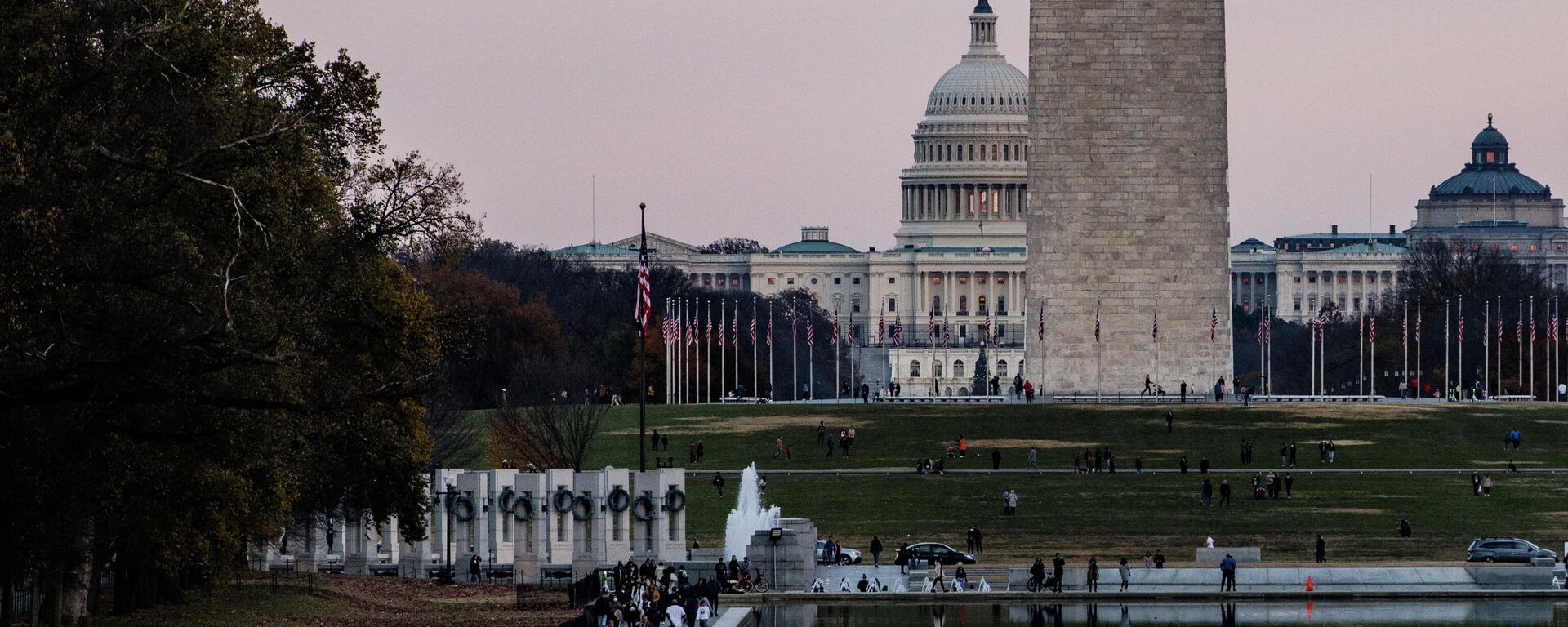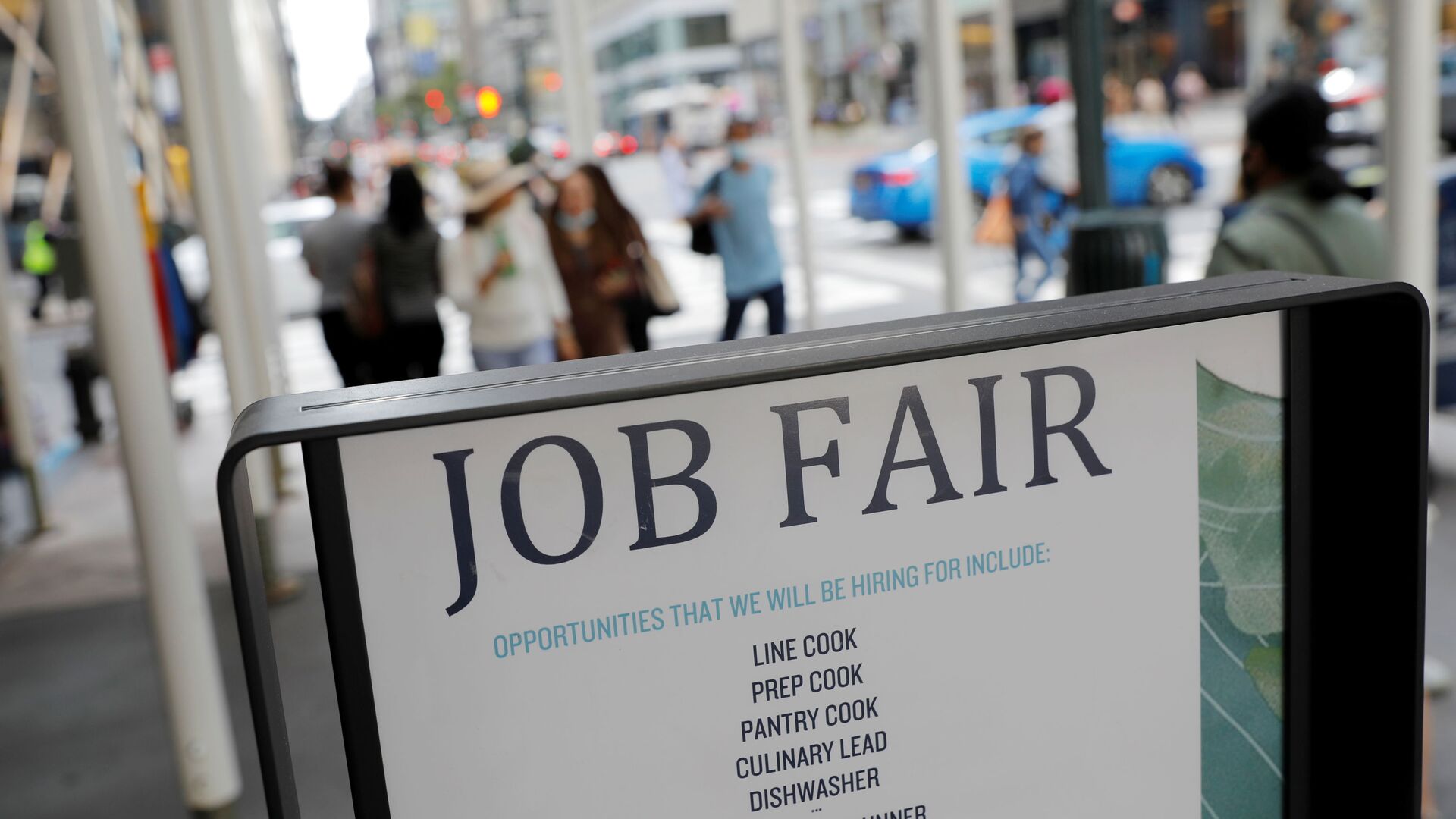https://sputnikglobe.com/20220203/us-jobless-claims-drop-2nd-week-in-row-1092723544.html
US Jobless Claims Drop 2nd Week in Row
US Jobless Claims Drop 2nd Week in Row
Sputnik International
WASHINGTON (Sputnik) - US unemployment claims fell for the second week in a row, according to the Labor Department's data released on Thursday. 03.02.2022, Sputnik International
2022-02-03T15:33+0000
2022-02-03T15:33+0000
2022-02-03T15:32+0000
us
jobs
https://cdn1.img.sputnikglobe.com/img/07e5/09/03/1083792841_0:320:3072:2048_1920x0_80_0_0_f91755c95be0556c8ca165e294866b29.jpg
"In the week ending January 29, the advance figure for seasonally adjusted initial claims was 238,000, a decrease of 23,000 from the previous week's revised level," the department said in a news release. Claims for jobless benefits fell for the first time during the week to January 22, after rising over three previous weeks to reach a three month high during the week ended January 15.The weekly snapshot of unemployment came ahead of Friday’s non-farm payrolls report from the Labour Department that will give a comprehensive picture of the jobs situation for all of January.After staggering unemployment triggered by the outbreak of the novel coronavirus in 2020, the labor market picked up last year, showing a jobless rate of 3.9% in December from a record high of 14.8% in April 2020. The Federal Reserve regards a jobless rate of 4% or below as "maximum employment".Still, jobs growth has not been even, with gains for some months coming in way below economists' expectations.That has complicated the task of the Federal Reserve, which is closely watching numbers on employment, as well as those on inflation, to determine the timing and gravity of the first pandemic-era interest rate hike. The central bank slashed rates to almost zero after the outbreak of the COVID-19 crisis in March 2020, and has kept them there since.The Federal Reserve now says the United States probably needs a series of rate hikes to counter inflation, as prices have soared from the lows of the pandemic due to trillions of dollars of federal relief spending, higher wage payouts and supply chain disruptions. The Fed’s target for inflation is 2% per year. But the US Consumer Price Index, an important barometer for inflation, grew by 7% in the year to December, expanding at its fastest rate since 1982.
https://sputnikglobe.com/20220108/twitter-grills-white-house-post-claiming-biden-created-more-jobs-than-any-president-ever-1092119451.html
Sputnik International
feedback@sputniknews.com
+74956456601
MIA „Rossiya Segodnya“
2022
Sputnik International
feedback@sputniknews.com
+74956456601
MIA „Rossiya Segodnya“
News
en_EN
Sputnik International
feedback@sputniknews.com
+74956456601
MIA „Rossiya Segodnya“
Sputnik International
feedback@sputniknews.com
+74956456601
MIA „Rossiya Segodnya“
us, jobs
US Jobless Claims Drop 2nd Week in Row
WASHINGTON (Sputnik) - US unemployment claims fell for the second week in a row, according to the Labor Department's data released on Thursday.
"In the week ending January 29, the advance figure for seasonally adjusted initial claims was 238,000, a decrease of 23,000 from the previous week's revised level," the department said in a news release. Claims for jobless benefits fell for the first time during the week to January 22, after rising over three previous weeks to reach a three month high during the week ended January 15.
The weekly snapshot of unemployment came ahead of Friday’s non-farm payrolls report from the Labour Department that will give a comprehensive picture of the jobs situation for all of January.
After staggering unemployment triggered by the outbreak of the novel coronavirus in 2020, the labor market picked up last year, showing a jobless rate of 3.9% in December from a record high of 14.8% in April 2020. The Federal Reserve regards a jobless rate of 4% or below as "maximum employment".
Still, jobs growth has not been even, with gains for some months coming in way below economists' expectations.

8 January 2022, 17:31 GMT
That has complicated the task of the Federal Reserve, which is closely watching numbers on employment, as well as those on inflation, to determine the timing and gravity of the first pandemic-era interest rate hike. The central bank slashed rates to almost zero after the outbreak of the COVID-19 crisis in March 2020, and has kept them there since.
The Federal Reserve now says the United States probably needs a series of rate hikes to counter inflation, as prices have soared from the lows of the pandemic due to trillions of dollars of federal relief spending, higher wage payouts and supply chain disruptions. The Fed’s target for inflation is 2% per year. But the US Consumer Price Index, an important barometer for inflation, grew by 7% in the year to December, expanding at its fastest rate since 1982.


